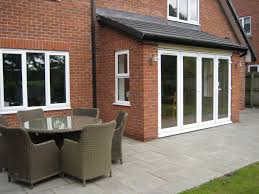Your small extension project does not have to put a hole in your pocket. If you know how to go about it, you can get it done at relatively cheap rate. You should look for a way to make as much savings as you can off the project. In this write-up, you will learn about one or two things you can do to keep the price down on the small extension project.
Simple design the way to go
If you keep the design simple, you will not have to spend so much to complete the extension project. You can reduce the number of corners and curves you want to include in the project and this will help cut cost, since such corners and curves tend to cost more. Instead of those curves and corners, you can simply opt for square or rectangular footprint and add simple pitched roof. It is cheaper this way and can also add to the aesthetics of the home. It is always better to opt for building materials that are readily available. These ones are very easy to obtain and also cost less.
DIY extension is cheaper
You can end up spending up to 2/3rd of the total building cost as labour cost. So, why not do some of the works by yourself? This will help reduce how much you end up spending on the small extension. To cut cost, you can fix the skirting boards and coving board by yourself. You can equally fix the architraves and tiling to cut cost. The bathroom fitting too can be handled personally. What about the landscaping, the decorating and labouring? Handling these things by yourself will help cut cost a great deal. However, do not take up any of the tasks by yourself if you do not have the skill and time to handle them.
Personal management
Instead of handling the supervision of the small extension to someone else, you can cut cost by supervising the project by yourself. Time spent on managing the project can cost you up to 25% of the total cost. You can therefore cut off this huge chunk by personally managing the project. Taking up the role of building contractor is not rocket science. You may have to liaise with your architect or designer on this, as well as building control department in your locality. This way, you will never have to spend an arm and a leg on your UK house extensions.
Saving on VAT
You can equally cut cost on your UK house extensions by saving on VAT. VAT can cost you up to 20% of the total cost spent on materials and labour. You can however make some savings on VAT by using self-employed tradespeople. These individuals can turn over far less than the threshold required for VAT registration. Why not go for second-hand materials too? These materials are completely free of VAT. It is better to buy such from private individuals selling the materials online.
With the points above, saving on UK house extensions will not be a problem.

